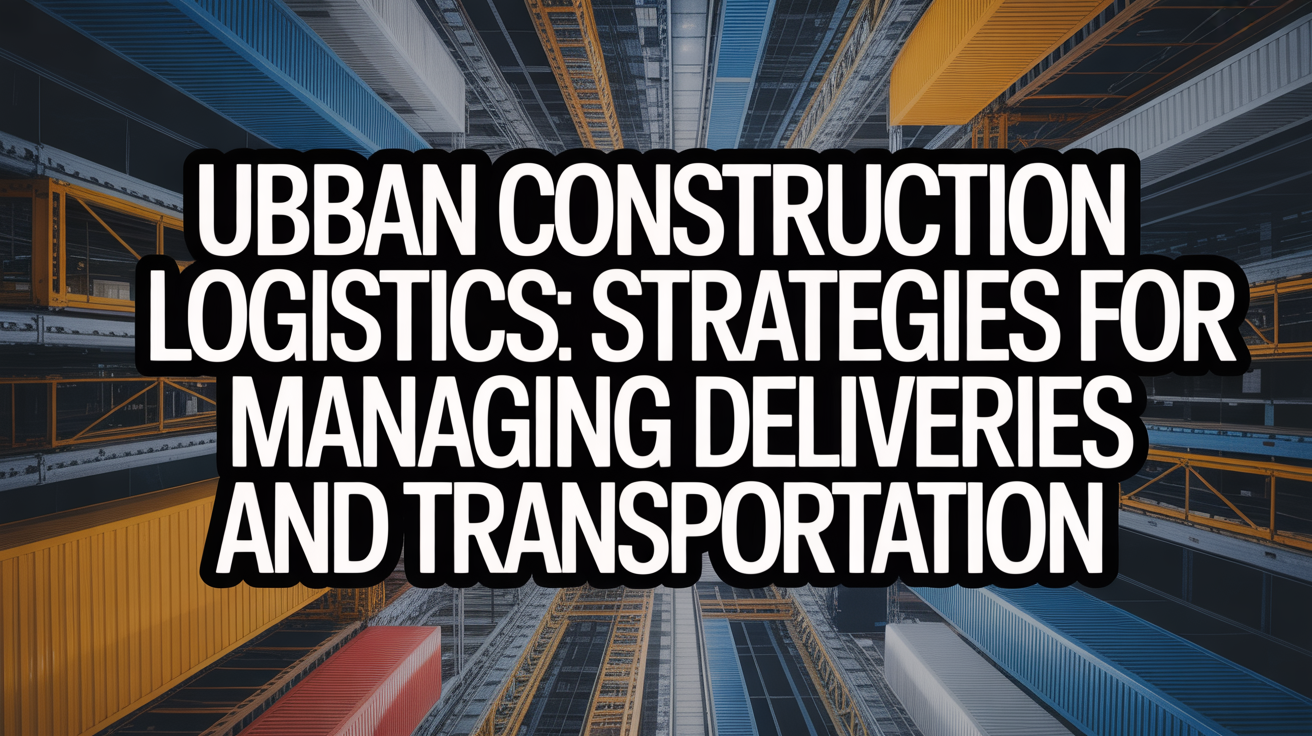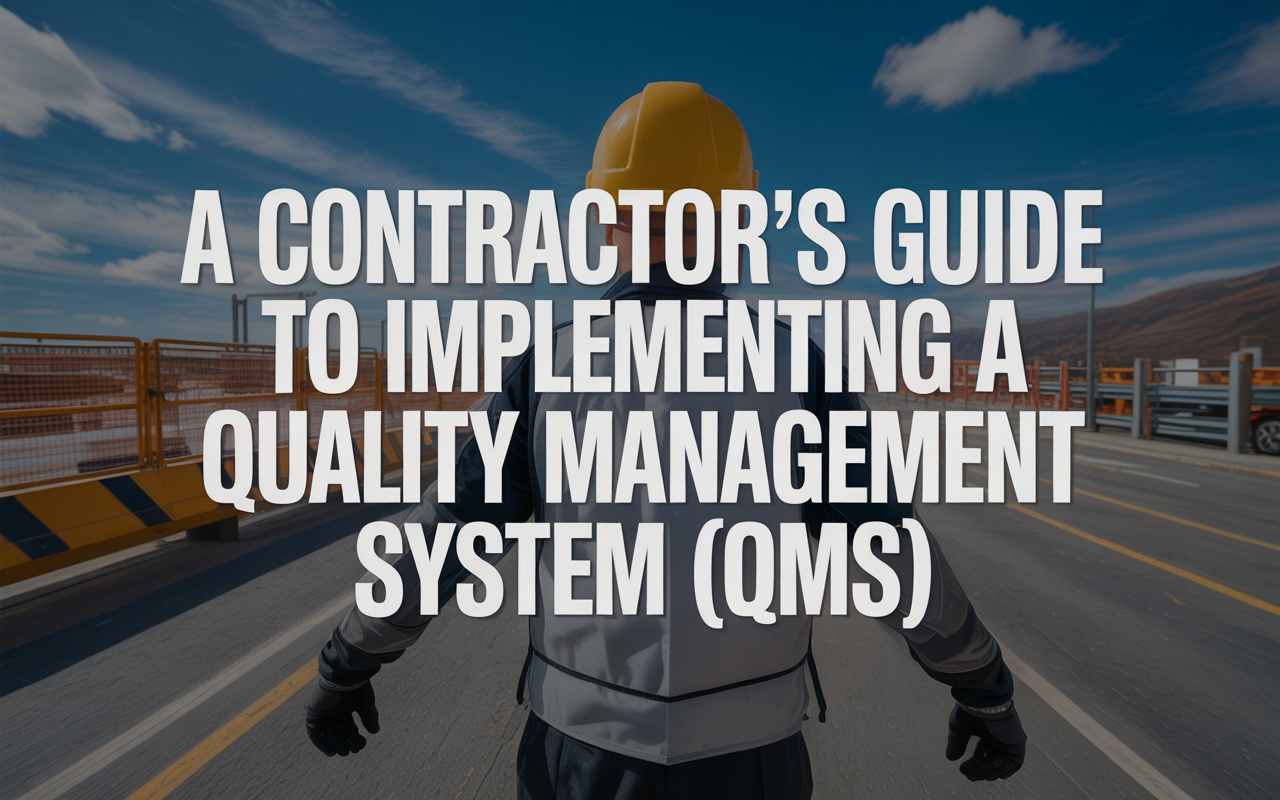Ever feel like juggling your shipments is more complex than a Rubik’s cube blindfolded? Moving goods from point A to point B, especially across different carriers and modes, involves a dizzying number of variables. Late deliveries, rising fuel costs, lost packages – these headaches plague businesses big and small. But what if there was a way to streamline this chaos, gain control, and actually save money? That’s where a Transportation Management System (TMS) enters the picture, acting like a central command center for your entire logistics operation.
Think of this post as your roadmap to understanding the power of a TMS. We’ll explore what it is, the game-changing advantages it offers (like serious cost savings 💰 and happier customers), its core features, and what to look for when choosing one. You’ll leave knowing how a TMS can iron out the wrinkles in your shipping processes, give you clear sightlines into your supply chain, and ultimately boost your bottom line. Ready to smooth out those logistical bumps?
What is a Transportation Management System?
So, what exactly *is* this magical TMS? At its core, a Transportation Management System is specialized software designed to help businesses manage and optimize the physical movement of goods, both incoming and outgoing. It acts as a hub, connecting shippers with carriers, streamlining planning, execution, and tracking of shipments across various transportation modes – road, rail, air, or sea.
A TMS doesn’t operate in a silo. It often connects with other critical business systems like Enterprise Resource Planning (ERP) and Warehouse Management Systems (WMS). This integration allows for a seamless flow of information, automating tasks like carrier selection based on cost and service levels, tendering loads, tracking shipments in real-time, and even handling freight payment and auditing. It takes manual guesswork and endless spreadsheets out of the equation.
“A transportation management system (TMS) is a supply chain software solution that enables enterprise-wide management, optimization, planning, and execution of logistics services for transporting goods in both inbound and outbound movement.” -Manhattan Associates
Key Benefits of Implementing a TMS
One of the most celebrated advantages of adopting a TMS is the potential for significant cost reduction. By analyzing rates, transit times, and carrier performance, a TMS helps you select the best carrier for each load. More importantly, its sophisticated algorithms optimize routes and consolidate shipments, meaning fewer empty miles, lower fuel consumption, and reduced overall freight spend. Who doesn’t love saving money? 😉
Tired of wondering where your shipments *actually* are? A TMS pulls back the curtain, offering unprecedented visibility into your supply chain operations. Real-time tracking capabilities mean you (and often your customers) know the status and location of goods at any given moment. This transparency helps identify potential delays early, allowing for proactive problem-solving rather than reactive scrambling.
This enhanced visibility directly translates into better customer service. When you can provide accurate delivery estimates, track shipments precisely, and communicate proactively about any potential issues, customer satisfaction skyrockets. A TMS empowers you to keep your promises and build stronger relationships by offering a reliable and transparent shipping experience. Happy customers = repeat business! 👍
“Through route optimization and load consolidation, businesses can reduce transportation costs by 10-20%.” -Shipwell
Core Functionalities of a TMS
At the heart of any good TMS lies powerful route planning and optimization. The system analyzes multiple factors – distance, traffic patterns, delivery windows, road restrictions, vehicle capacity, and driver hours – to calculate the most efficient routes. This minimizes travel time and fuel costs while ensuring compliance with regulations.
Managing relationships and interactions with multiple carriers can be complex. A TMS centralizes carrier information, including contracts, rates, insurance details, and performance metrics. This makes it easier to select the right carrier for each shipment based on predefined criteria, tender loads electronically, and monitor carrier performance over time.
Freight billing can be a source of errors and overcharges. A TMS often includes freight audit and payment capabilities. It automatically compares carrier invoices against agreed-upon rates and shipment data, flagging discrepancies for review. This ensures you only pay what you owe and simplifies the payment process, saving administrative time and preventing costly errors.
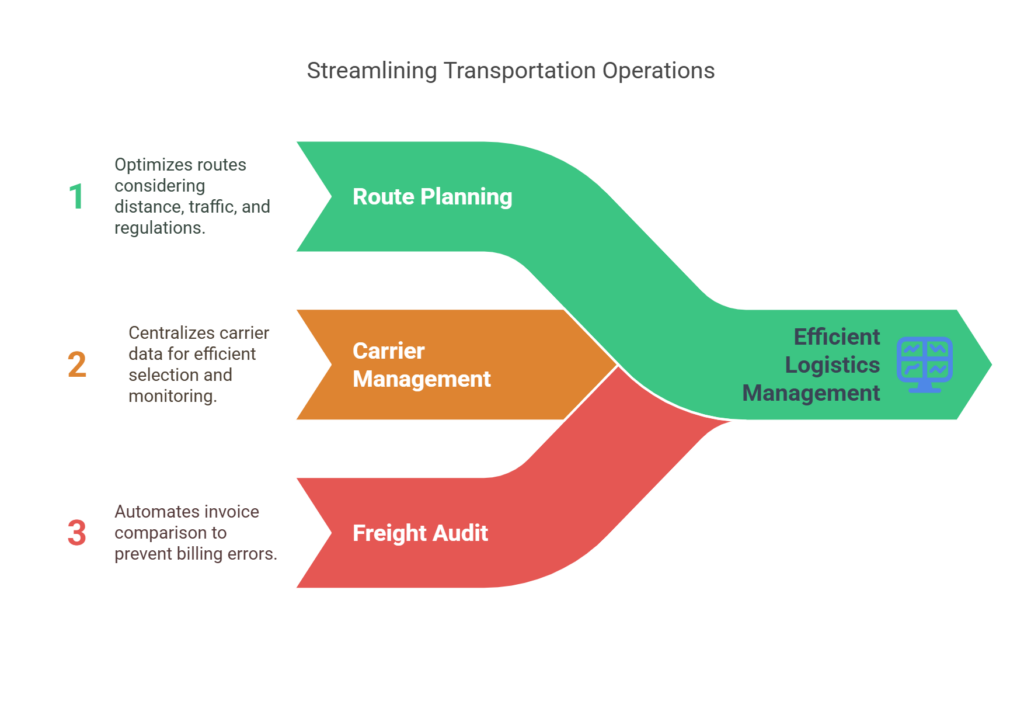
Improving Operational Efficiency with TMS
Let’s talk efficiency. A major win with a TMS is its ability to automate many time-consuming manual tasks that bog down logistics teams. Think about hours spent calling carriers for quotes, manually tracking shipments, or reconciling invoices. A TMS handles much of this electronically, freeing up your team to focus on strategic initiatives and exception management rather than repetitive data entry.
By automating workflows and optimizing processes like routing and carrier selection, a TMS helps you make better use of your resources – both human and physical assets. Drivers spend less time on inefficient routes, planners can manage more loads effectively, and administrative staff deal with fewer errors. This leads to a direct boost in overall productivity across your logistics operation.
“Efficiency is the name of the game in transportation, that’s why a TMS is designed to help you do more with less. Automating repetitive tasks, streamlining workflows and optimizing resource allocation turns your operation into a well-oiled machine.” -Descartes
Enhancing Supply Chain Visibility
Imagine having a bird’s-eye view of your entire transportation network. A TMS provides exactly that through real-time tracking and monitoring. Using GPS, ELD integrations, and carrier updates, you gain instant insight into shipment status, location, and estimated arrival times. This visibility extends beyond just your team; it can often be shared with customers, providing them with self-service tracking capabilities.
Beyond real-time tracking, a TMS gathers vast amounts of transportation data. This data is gold! 🏆 The system’s reporting and analytics features allow you to analyze key performance indicators (KPIs) like on-time delivery rates, cost per mile, carrier performance, and accessorial charges. These insights help identify trends, pinpoint areas for improvement, and make data-driven decisions to refine your logistics strategy.
Optimizing Route Planning and Load Consolidation
Smart route planning is a cornerstone of TMS functionality. The system doesn’t just find the shortest path; it finds the *optimal* path. It considers factors like real-time traffic conditions, delivery time windows, vehicle capacities, road constraints (like bridge heights or weight limits), and even fuel efficiency to generate routes that minimize delays and cut down on fuel expenses.
Load consolidation is another powerful cost-saving feature. A TMS can identify opportunities to combine multiple smaller shipments (LTL – Less Than Truckload) heading in the same direction into a single, larger shipment (FTL – Full Truckload). This typically results in lower overall freight costs compared to shipping multiple smaller loads separately and often leads to fewer handling points, reducing the risk of damage.
“By analyzing factors like distance, traffic patterns, vehicle capacity, and fuel efficiency, a TMS can create the most efficient routes for your deliveries.” -Shipwell
Improving Customer Service with TMS
A TMS transforms customer communication from reactive to proactive. Instead of waiting for a customer to call asking “Where’s my order?”, the system allows you to provide automated status updates via email or SMS. If a delay occurs (thanks to that real-time visibility!), you can often notify the customer *before* they even realize there’s an issue, managing expectations effectively.
Nothing frustrates customers more than uncertainty. By leveraging the real-time tracking and route optimization features, a TMS provides much more accurate estimated times of arrival (ETAs). Sharing these precise ETAs and providing easy access to tracking information gives customers peace of mind and builds trust, significantly improving their overall experience with your brand. 😊
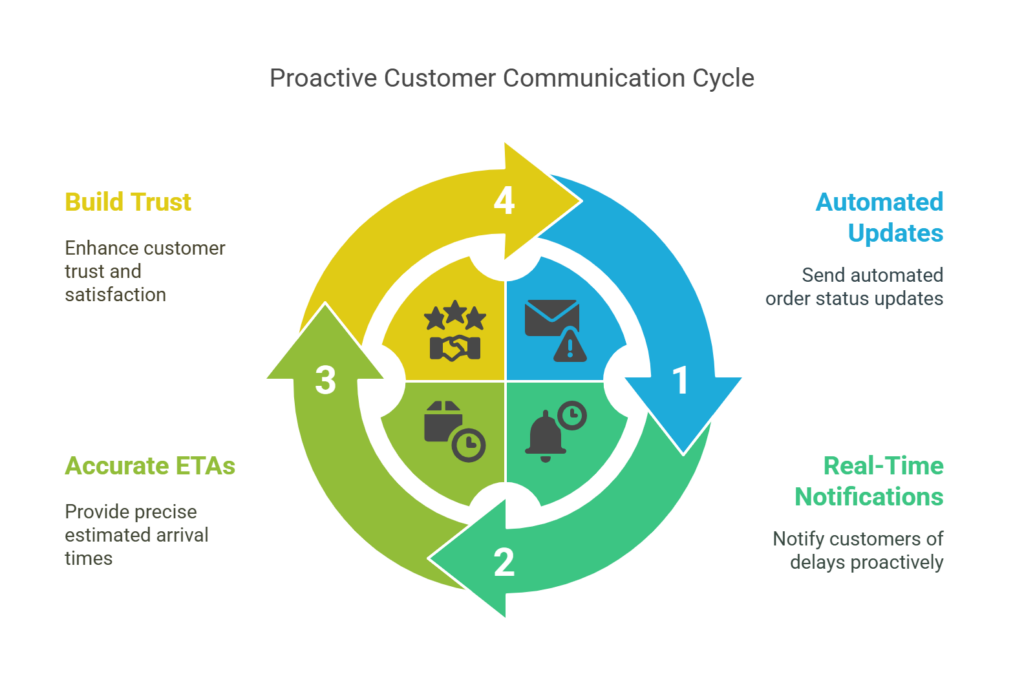
Challenges in TMS Implementation
While the benefits are clear, getting a TMS up and running isn’t always a walk in the park. One common hurdle is integrating the new system with your existing software stack, like ERP or WMS systems. Ensuring seamless data flow between systems is critical for realizing the full potential of the TMS and requires careful planning and technical expertise.
Overcoming these challenges starts with thorough planning. Define your goals clearly, involve key stakeholders from different departments early on, and choose a provider with strong integration capabilities and support. Phased rollouts can also be less disruptive than a big-bang approach. Proper user training and change management are essential to ensure your team embraces the new system and uses it effectively.
Choosing the Right TMS for Your Business
Selecting the ideal TMS involves looking beyond just features. Consider the provider’s industry experience, their track record, and the level of customer support they offer. Think about your specific needs – are you focused on LTL, FTL, parcel, or multi-modal shipping? Does the TMS specialize in your primary modes? Also, assess the user interface – is it intuitive and easy for your team to learn?
Your business isn’t static, and your TMS shouldn’t be either. Look for a system that can scale with your growth, whether that means handling more volume, adding new geographic regions, or supporting different transportation modes down the line. Customization options are also important, allowing you to configure workflows and reports to match your unique business processes rather than forcing you into a rigid, one-size-fits-all approach.
Future Trends in Transportation Management Systems
The world of TMS is constantly advancing. Exciting developments include the integration of Artificial Intelligence (AI) and Machine Learning (ML). These technologies can analyze historical data and real-time inputs to make even smarter predictions about transit times, identify hidden cost-saving opportunities, and automate more complex decision-making processes, like dynamic carrier selection.
Expect to see TMS platforms offering even greater predictive analytics, improved sustainability tracking (like calculating carbon footprints 👣), enhanced collaboration tools for shippers and carriers, and deeper integration with IoT devices for real-time condition monitoring (temperature, humidity, etc.). These advancements promise to make logistics operations even more efficient, resilient, and data-driven.
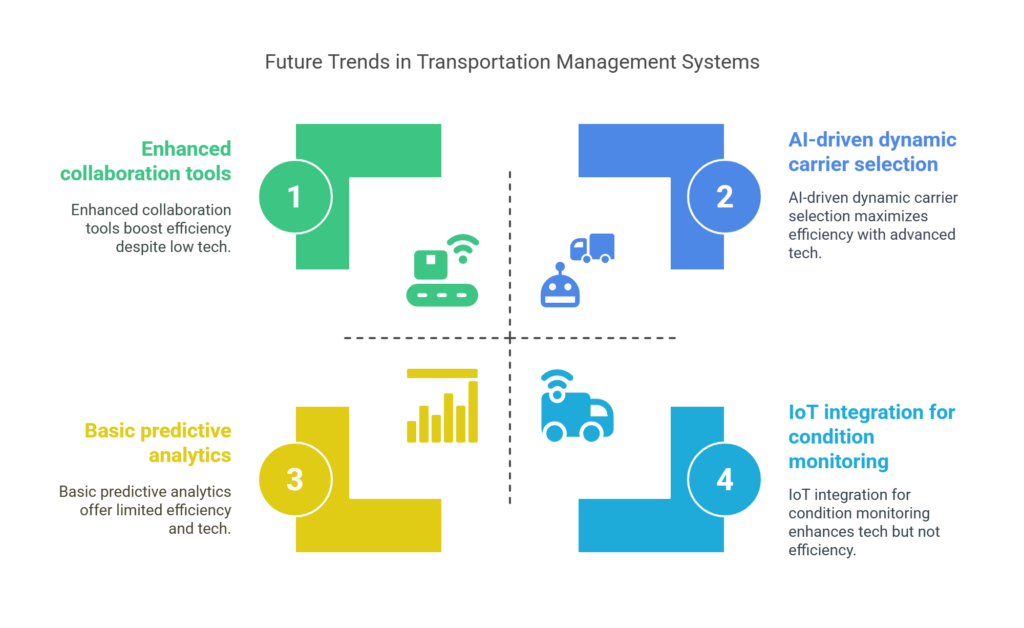
How Nektar.io Revolutionizes Transportation Management
Amidst the options, Nektar.io stands out with its forward-thinking approach to transportation management. Nektar.io offers a robust, cloud-based TMS designed for modern supply chains, focusing on intuitive usability, powerful automation, and deep visibility. Their platform brings together planning, execution, tracking, and analytics in a streamlined interface that simplifies complex logistics tasks.
Choosing Nektar.io means benefiting from features like intelligent route optimization, seamless carrier integration, proactive exception management, and insightful analytics dashboards. Their focus on user experience ensures quick adoption, while the platform’s scalability supports businesses as they grow. Nektar.io isn’t just a tool; it’s a partner in optimizing your transportation network and achieving measurable results in cost savings and efficiency gains. ✨
FAQ
What are the main components of a Transportation Management System?
A typical TMS includes several core components working together. Key ones are: route planning and optimization engines to find the best paths; carrier management modules for contracts, rates, and selection; load execution tools for tendering and booking shipments; real-time visibility and tracking features; and freight audit and payment capabilities for financial control.
How does a TMS integrate with other supply chain software?
TMS integration is crucial. It usually connects with Enterprise Resource Planning (ERP) systems to pull order information and update financials, Warehouse Management Systems (WMS) for coordinating shipments leaving or entering the warehouse, and sometimes Customer Relationship Management (CRM) systems for customer data. Integration happens through APIs (Application Programming Interfaces) or EDI (Electronic Data Interchange) to ensure smooth data exchange.
What types of businesses benefit most from implementing a TMS?
While businesses of many sizes can benefit, companies with significant freight spend, complex shipping needs (multiple modes, carriers, locations), or a high volume of shipments typically see the greatest impact. This includes manufacturers, distributors, retailers, e-commerce companies, and third-party logistics (3PL) providers across various industries.
How long does it typically take to implement a TMS?
Implementation timelines vary widely based on the complexity of the operation, the specific TMS chosen, the number of integrations required, and the resources dedicated to the project. A simple cloud-based TMS implementation might take a few weeks, while a complex, enterprise-wide rollout with extensive customization and integrations could take several months or longer.
What ROI can companies expect from a TMS implementation?
The Return on Investment (ROI) from a TMS can be substantial. Companies often report significant freight cost reductions (5-20% or more) through optimization and better carrier negotiation. Additional ROI comes from improved operational efficiency (reduced labor costs), fewer errors in freight billing, better inventory management (less safety stock needed due to reliable transit times), and increased customer satisfaction leading to retention.
Conclusion
In today’s fast-paced market, managing transportation effectively isn’t just an operational necessity; it’s a competitive advantage. A Transportation Management System offers a powerful suite of tools to tame logistics complexity, slash transportation costs, gain crucial visibility into your supply chain, automate tedious tasks, and ultimately delight your customers with reliable deliveries. It moves logistics from a cost center towards a strategic function.
Investing in the right TMS can truly reshape your logistics performance. If you’re ready to streamline your shipping, gain control over your freight spend, and improve your customer service, exploring a modern TMS solution is a smart move. Consider checking out what Nektar.io has to offer – their innovative platform might be just the key to unlocking new levels of efficiency for your business.
Key Takeaways:
- TMS software streamlines logistics operations and reduces transportation costs
- Real-time visibility and tracking promote supply chain efficiency
- Improved customer service through accurate delivery estimates and proactive communication
- Optimized route planning and load consolidation lead to clear cost savings
- Successful TMS adoption requires careful selection and integration strategies
Ready to see how Nektar.io can transform your transportation management? Visit Nektar.io today to learn more about their cutting-edge TMS solution and schedule a personalized demo! 🚀


